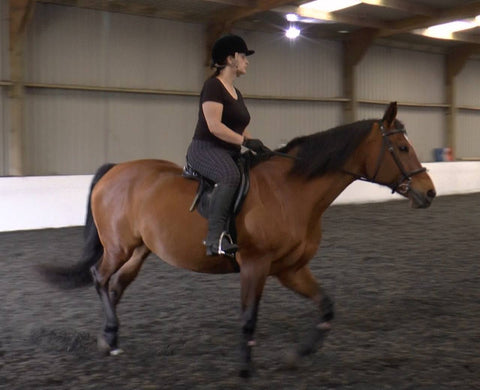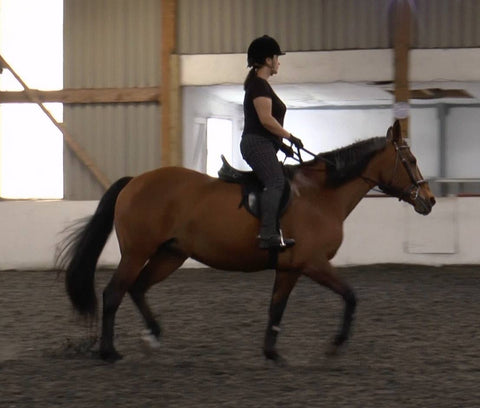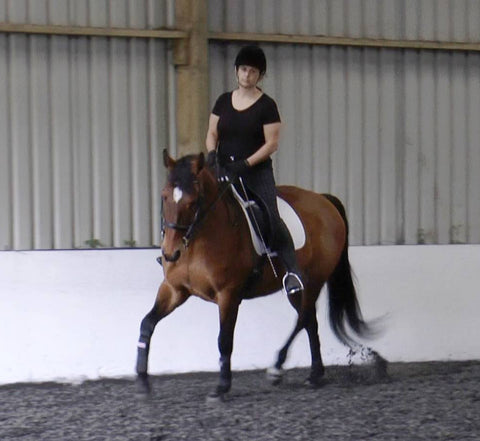One of my EE teachers was asked by a fellow livery at the yard where she keeps her horses ‘Why ride in this Classical seat? It's not proper riding, you can’t ride like that out hacking or generally’. Oh the misunderstanding, the ignorance that still abounds in the horse world!
My staff, pupils and I, never ride in any other way. Yes, we will put the stirrups up a hole for hacking and probably two if going for a canter, but the position doesn’t alter from the ear/shoulder/hip/heel line. Little do these people realise that it’s actually a very secure position and the only one of balance! Yes, you may need to ride in a more defensive position on a difficult horse, but it is a rarity and certainly not a position from which you can influence a horse to train on in dressage, whether classical or otherwise.
We had a lovely young lady here a few days ago to watch us ride and train. She is intelligent and questioning, and I will be teaching her shortly on her own horse. She was astonished at the degree of precision in correcting my working student’s barely visible faults. However, if the smaller faults are ignored they have a nasty habit of becoming bigger ones! So few teachers/trainers actually notice the larger faults nor bother to correct them, never mind the smaller ones! But those faults affect the horse’s ability to perform, yet the horse is the one they normally attempt to correct, whereas if the rider faults were corrected, nine times out of ten, the horse’s faults would disappear!





Riders who have had a sit on my Lusitano, Rei, have trouble even keeping him on the track. They are so used to moving too much, blissfully unaware of what their weight is doing to cause him to veer off the track, and even less aware of where their weight actually is. The weight aids are so easy to teach, yet they are either not taught at all, or are taught in such a confusing way that the rider is more muddled than ever!
I have long said that ‘the aids should be clear to the horse, but not visible to the onlooker’, yet how often do we see riders who actually look to be a part of their horse, with aids that are all but unnoticeable? So much attention is paid now by riders to connecting with their horse on the ground, but as I said in a blog a few weeks ago, the whole connection goes to pot once on the horse and riding in a way which is not only confusing the horse, but even hurting him?I wonder when I get the new website, ‘The Online Riding School’ up and running, just how many will actually subscribe or buy the videos, because it is about riding itself and not just ‘connecting’ on the ground. Without the knowledge of the mechanics of riding, no amount of attention to connection once you are on board will make a jot of difference, if you are applying ‘aids’ which hinder, rather than achieve their own meaning, that of ‘help’.
The ‘mechanics’ of riding are simple. They do not need a load of jargon, images and analogies to get the message across. Simple plain English, to explain and clarify, then immediate correction or preferably as a problem is about to happen, will get the rider’s feel and timing going, far more than any airy fairy, arty farty stuff that in actual fact bears no relation to assisting you to sync your movement with that of the horse!!
By all means develop a bond with your horse on the ground. We have great relationships with all our horses, as we treat them absolutely as individuals and encourage them to have their own personalities, within the bounds of reason!! We like nothing more than for our horses to be playful even under saddle, as we want them to enjoy being with us, but especially when we are on their back. There is never a moment when subconsciously, I am aware that I am there by my horse’s good grace and that it behoves me to do my utmost never to impede him, by being as good a rider as I can possibly be, even now in my 60s.
So I hope that those who read this will help to spread the word of a kinder way to ride and train.
Heather
